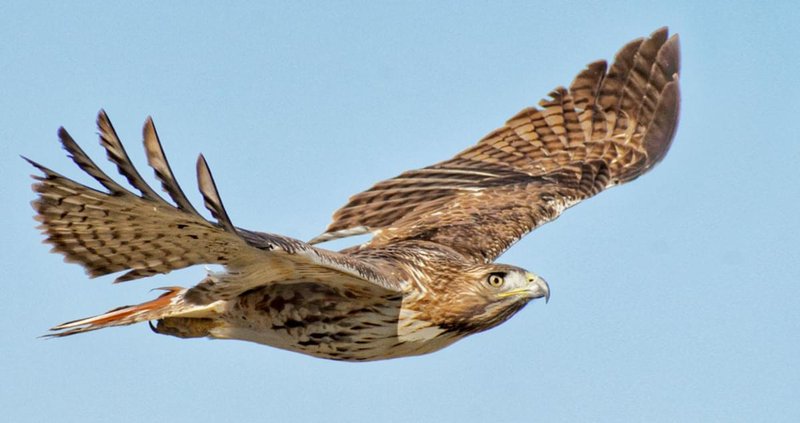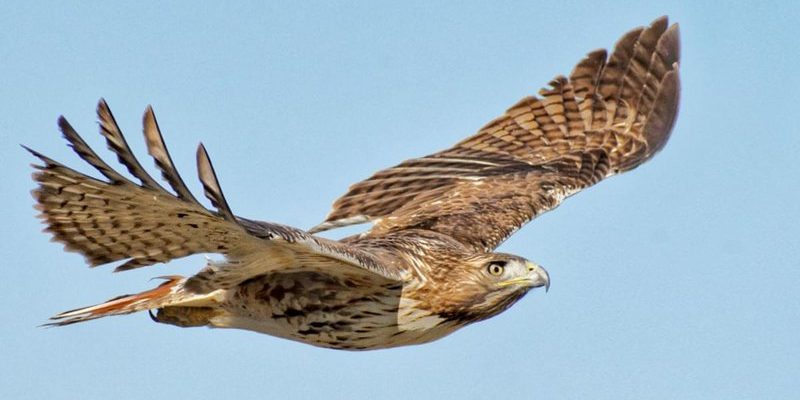
Hawks are like the superheroes of the bird world. With their sharp eyes and powerful wings, they glide effortlessly through the sky, surveying their territory from above. Imagine you’re out in nature, and one of these majestic creatures swoops down, showcasing its grace and power in perfect harmony. It’s truly a sight to behold! But there’s so much more to hawks than just their hunting skills and beauty. Let’s dive into some fascinating facts about these incredible birds.
While many of us know hawks as skilled hunters, there’s a whole world of interesting behaviors and abilities that often go unnoticed. From their impressive eyesight to their unique social structures, hawks have so much to teach us about survival in nature. Whether you’re a birdwatching enthusiast or just someone curious about nature, you might be surprised by what we discover about these winged wonders.
1. Hawks Have Amazing Eyesight
One of the most remarkable features of hawks is their eyesight. They can see about eight times farther than humans. Imagine being able to spot a tiny mouse from several hundred feet in the air! This incredible vision allows them to hunt effectively, spotting prey even in dense foliage. Hawks have a special layer of cells in their eyes that enhances their ability to see color and detail.
What’s even more fascinating is that hawks can see ultraviolet light. This means that certain markings on flowers or trails made by animals, which are invisible to us, stand out to them. This superpower not only helps them find food but also influences their mating rituals. When you think about it, it’s like having a built-in GPS that points them towards their next meal or potential mate!
2. They’re Not All Solitary
While many people picture hawks as solitary creatures, some species actually enjoy socializing. For instance, the Red-tailed Hawk can often be seen perched near other hawks, especially during migration. This behavior might seem surprising since they’re known for their territorial nature, but during certain times of the year, they can gather in groups. It’s kind of like how we might enjoy a cookout with friends during summer, even if we usually prefer our own space!
These gatherings can serve multiple purposes. For one, being near others can help them find food more efficiently. It’s also a great way to learn from each other when navigating new environments. Seeing hawks socialize reminds us that even the fiercest predators can appreciate companionship now and then.
3. Hawks Have Diverse Diets
When we think of hawks, we often visualize them swooping down on small mammals like rabbits or mice. But their diets are actually quite diverse! Hawks are opportunistic feeders, meaning they’ll eat whatever is available and easy to catch. This could include small birds, reptiles, insects, or even carrion. The variety in their diet allows them to adapt to different environments and food sources.
For example, the Cooper’s Hawk prefers birds while the Red-shouldered Hawk enjoys a meal that includes frogs and snakes. Just like we might have a favorite food but enjoy trying new things every now and then, hawks make the best of what their surroundings offer. This adaptability is crucial for their survival, especially during changing seasons.
4. Their Hunting Techniques Are Impressive
Hawks are known for their exceptional hunting skills, but did you know they have different techniques based on their species? For instance, Red-tailed Hawks often use a method called perch-and-wait. They’ll sit quietly on a high branch and scan the ground for movement. Once they spot prey, they swoop down with incredible speed. It’s like a well-planned ambush!
On the other hand, Cooper’s Hawks prefer to hunt in trees, darting swiftly through branches to catch birds off-guard. Their agility and speed are a sight to see! Each hunting technique is honed by years of evolution, making them experts at capitalizing on their strengths and the environment around them.
5. Some Hawks Migrate Long Distances
Many hawk species are migratory, flying thousands of miles to find suitable climates and food sources. For example, the Broad-winged Hawk undertakes one of the longest migrations, traveling from North America to Central America. It’s like they’re packing their bags for a vacation every year!
The migration process is fascinating. Hawks travel in groups called kettles, where they ride thermal updrafts to conserve energy. This not only makes their journey easier but also allows them to bond with fellow birds. Just like humans enjoy traveling with friends, hawks share a common goal of reaching their wintering grounds safely.
6. They Use Vocalizations to Communicate
Hawks have a range of vocalizations that convey different messages. Whether they’re defending territory or calling to a mate, their sounds are crucial for communication. The sharp, piercing cry of a hawk can often be heard echoing through forests and fields, signaling their presence to others in the area.
Interestingly, each species has its unique calls. For instance, the Red-shouldered Hawk has a distinctive “kee-kee-kee” call that sounds almost like a dog barking! These vocalizations are not just for show; they serve practical purposes in territory marking and attracting mates. It’s their way of saying, “Hey, this is my turf!”
7. Hawks Are Found Worldwide
Hawks are remarkably adaptable and can be found on every continent except Antarctica. From North America to Africa and Asia, these birds have made a home in diverse habitats, including forests, grasslands, and even urban areas. You might be surprised to see one perched atop a building in a busy city!
This global presence highlights their adaptability. They can thrive in various environments, whether it’s the wild forests of North America or urban landscapes buzzing with human activity. Each species has adapted its hunting and nesting strategies to suit its surroundings, showcasing their resilience in the face of change.
8. Their Feathers Serve Multiple Purposes
Hawk feathers aren’t just for show; they play several essential roles. Primarily, feathers provide the necessary lift for flying. But they also help with insulation, protecting hawks from extreme temperatures. When you see a hawk fluffing its feathers, it’s often adjusting for comfort!
Additionally, feathers help with camouflage. The patterns and colors of their feathers can blend into their surroundings, making it easier to hunt and evade predators. It’s a bit like wearing a disguise to go unnoticed. The beauty of their plumage is not only stunning but strategically significant for their survival.
Lastly, during courtship, hawks may display their feathers to attract mates. Bright and healthy feathers signal a strong and fit partner, which is an important factor in the mating process. Feathers are truly multifunctional tools in the hawk’s life!
Hawks are truly fascinating creatures with so much more than meets the eye. Each fact about them reveals a layer of complexity and beauty that enriches our understanding of nature. Whether observing them in the wild or learning more about their behaviors, hawks remind us of the wonders of the world around us. So, the next time you see a hawk soaring through the sky, remember these intriguing facts and appreciate the impressive life it leads.

